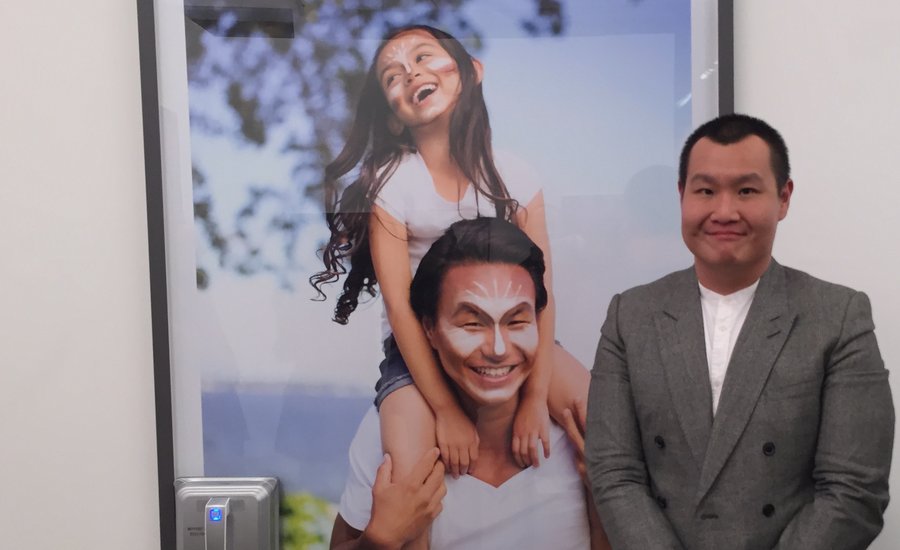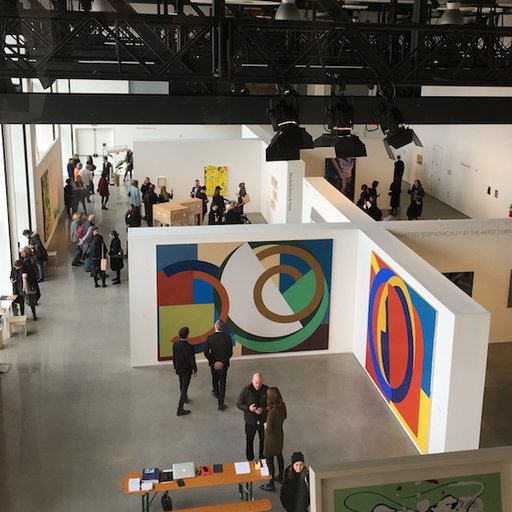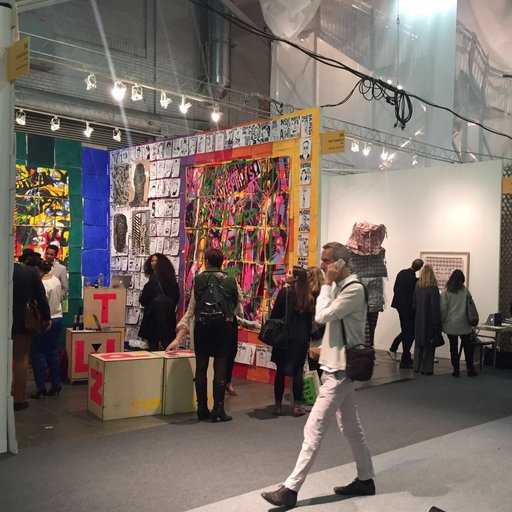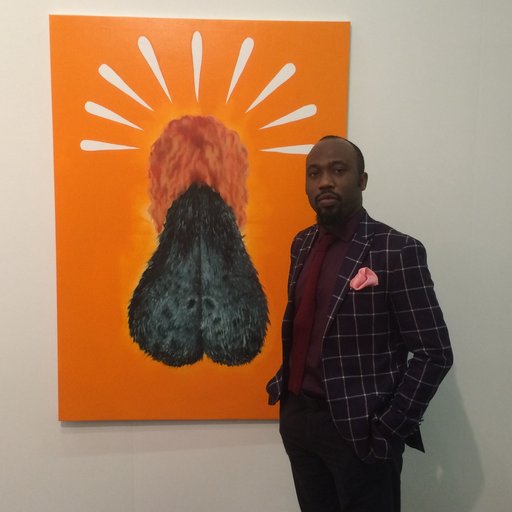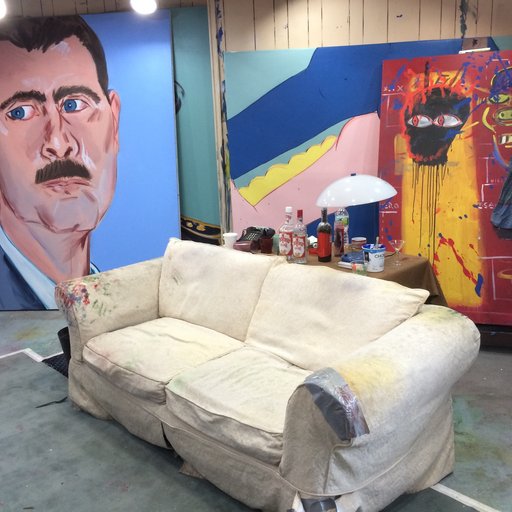Amid the future-shock fashions on view at Independent this year—as if the cool crowd took the new Spring Studios location as a chance to trot out their Blade Runner gear—the double-breasted grey checkered suit sported by Project Native Informant founder Stephan Tanbin Sastrawidjaja might seem to suggest a gallerist of a conservative mien. Those with an eye for tradecraft, however, would rather notice the hallmarks of a classic spy. Or, more accurately, an infiltrator.
Flash back a half decade ago, and Sastrawidjaja was earning his PhD in comparative literature at Columbia University, writing his dissertation on the collateral development of literary studies and area studies—the new field of scholarship on culture as circumscribed by geography, i.e. Middle Eastern, South Asian, and African Studies (MESAAS)—with a focus on the subject as a racialized other. (Orientalism author Edward Said being the intellectual forefather of the field.) After school, Sastrawidjaja slid into the art world while dating an artist—a classic point of entry—starting out with an internship at Paula Cooper Gallery. He then began working for two private collections in Japan and Switzerland, before finding himself in London in 2010, where he “hung out for a while” and attended classes at Goldsmiths, befriending many artists of his generation along the way.
In 2012, he linked up with Natasha Isaacs and Petros Moris to create a “curatorial office” called SIM, organizing projects with artists as diverse as Martha Rosler, Ian Cheng, James Hoff, and Thea Djordjadze. Then, the following year, he found a space that suited his tastes: a dingy former garage in London’s luxe Mayfair district, right behind Claridge’s and neighboring a Louis Vuitton and a yacht store. For the name, Sastrawidjaja chose Project Native Informant after the colonial-era term for an indigenous person who explains the behavior and customs of his fellow subjects to the imperial power. It’s a provocative name for a gallery, since what is a dealer if not someone who relates the activities of an artistic underclass to moneyed collectors? One suspects that the name is ironic, and that perhaps the informing goes in the other direction.
Now Project Native Informant is coming up on its third anniversary in April, and his program—which he described as dedicated to “painting, institutional critique, and online life as we know it”—stands out at Independent for its affectingly paranoid cast. On view, for instance, is an airbrushed, stock-image-esque photo of a father and child with Photoshopped tribal facial markings, made extra uncanny by the small robot that crawls over its surfact; it’s by DIS, the Berlin Biennale curators who Sastrawidjaja knew back from before they started their famous “magazine.” Then there’s a “Post-Internet” painting by the young Sean Steadman, who the dealer discovered in his Royal Academy graduate show, and a series of small canvases that Morag Keil made from photos her boyfriend took of her secretly, an intimate form of surveillance. Like the gallery itself, they make you pause for a moment, with the feeling that you’re being watched.











